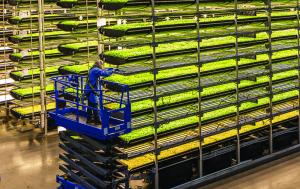PUF Special Edition on Efficient Electrification

A renewed and major push to further electrify our society and economy? It wouldn't make any sense, if the production of electricity polluted the environment at twentieth century levels. It wouldn't make any sense, if the usage of electricity was as inefficient as it was in the last century.
And it wouldn't make any sense if the cleanliness in its production, and efficiency in its usage, had been purchased with electricity's essential advantages — cost, convenience, safety, flexibility and versatility — as payment. This would have been a steep price, possibly too steep a price.
But, hey, it's the twenty-first century. Electricity production and usage has undergone a metamorphosis. Pollution from its production has fallen dramatically and is still falling, at a rapid pace. The efficiency of using electricity has risen dramatically and is still rising, at a rapid pace.
Yet — and this is an astonishing fact — electricity's real cost is at its historic low. Electric bills have dropped to 1.32 percent of consumer expenditures this year. How utilities, regulators and policymakers achieved this magic is a subject for another column. But they did.
Even though electricity's environmental impact has shrunk and keeps shrinking. Even though electricity's efficiency has grown and keeps growing.
Actually, if you think about it, electricity's increasing efficiency in every dimension — production, delivery and usage — is one of the main reasons why electricity's real cost is at its historic low. Nuclear plant refueling was made much more efficient. Natural gas-fired plants were made much more efficient. Regional grids were made much more efficient. Lighting and refrigeration were made much more efficient. Hundreds of innovations large and small have managed to reduce electricity's real cost while expanding our employment and enjoyment of electricity.
So, the renewed and major push to further electrify. It turns out we have a long way to go.
A fifth of the energy in America is electrical. What's the other four-fifths? Generally, the burning of fossil fuels at the point of use. Right there, right where we live and work, often a few feet away from us.
We burn fossil fuels just beyond our steering wheels in our cars, to drive them. We burn fossil fuels just below our kitchens in our basements, to heat our homes. The food we eat is literally fueled, produced with farm tractors and irrigation pumps, and delivered with freight trucks (often refrigerated from the truck's diesel combustion).
How much of that four-fifths of America's energy should and could be electrified in the decades to come?
Not long ago, our electricity came from a mix of around fifty percent coal-fired generation, ten percent oil-fired, ten percent natural gas-fired, and thirty percent zero-carbon (from hydro and nuclear). Not long from now, our electricity will be a mix of around ten percent coal-fired, zero percent oil-fired, thirty percent gas-fired, and sixty percent zero-carbon. Electricity will then be far cleaner.
The zero-carbon share will double. It will rise from thirty percent to sixty percent.
The high-carbon share will be a sixth of what it had been. It will fall from fifty percent to ten percent.
The grid's electricity on average recently became cleaner than combusting oil at the point of use. How did that happen? It's not hard to understand. The zero-carbon and low-carbon percentage shares are growing. Their growth is offsetting the shrinking high-carbon share.
So, powering your car with the grid is now cleaner than powering it by combusting a refined oil product right there under the hood. Electricity wasn't as clean before. It is now.
The grid's electricity will next become as clean as combusting natural gas at the point of use. That shall be a momentous day. Natural gas is the cleanest of the fossil fuels.
Ultimately, electricity will become about twice as clean as combusting natural gas at the point of use. Electricity will then have left all the fossil fuels — burning them yourself in your home or place of business — in the dust.
In the decades to come, burning fossil fuels right there will remain a good fit for some applications. Such as to fly aircraft. Such as to drive long-haul heavy-duty trucks. Such as to heat cold-climate buildings. And for certain industrial processes. Though these applications might someday become exceptions to the norm.
The question on the table is, how much of the four-fifths of America's energy from burning fuels at the point of use should and could be electrified? Let's see. Let's glimpse the future, in this special issue of Public Utilities Fortnightly on "efficient electrification." See the articles online here.
Is your organization impacting the debate as a member of the PUF community? Nearly two hundred utilities, commissions, consumer advocates, associations, agencies, professional firms and vendors are members. How about yours?
Steve Mitnick, Editor-in-Chief, Public Utilities Fortnightly
E-mail me: mitnick@fortnightly.com



